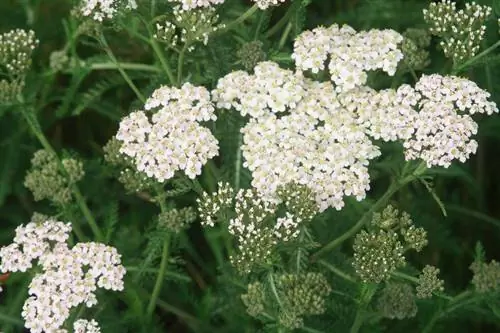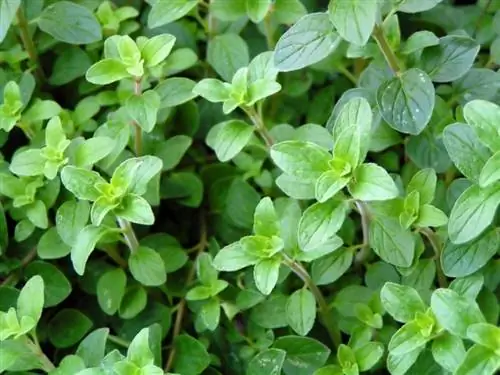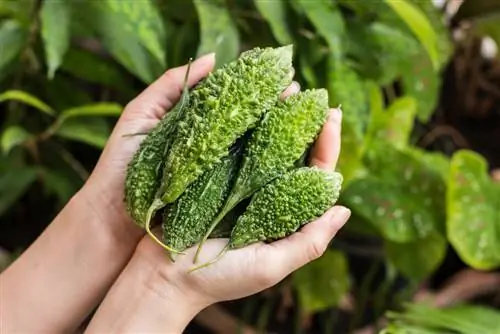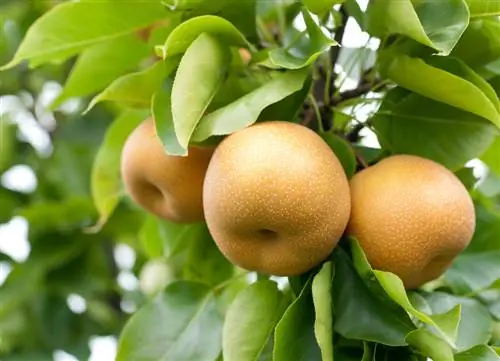- Author admin [email protected].
- Public 2023-12-25 17:45.
- Last modified 2025-06-01 06:02.
In this country, yarrow often grows on the edge of field paths or along railway tracks. The frugal and easy-care plant not only blooms beautifully, but it can also be used as a versatile medicinal plant.
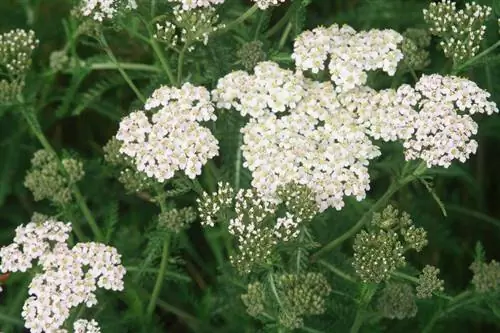
What are the properties of yarrow?
Yarrow (Achillea millefolium) is a frugal medicinal plant that grows 20 - 80 cm high and blooms from July to September. It prefers sunny, moist locations and is hardy. The plant can be propagated by seeds or root division and is used as tea or fresh juice, for example for digestion.
What you need to know about yarrow:
Botanical name: Achillea millefolium
Other popular names: Achilles herb, soldier's herb, goose tongue, milfoil, lady's thanks
Plant family: Asteraceae
Growth height: depending on the type and location of 20 to about 80 centimeters
Flower shape: Asteraceae with false umbels (therefore dangerous if you have an asteraceae allergy)
Flowering time: mainly from July to September
Location: likes to be sunny, with moist and permeable soil
Hardy: easily hardy outdoors
Propagation: via seeds and by root divisionPerennial: after every four to five years, division is beneficial (to prevent aging)
Properly care for the yarrow in the garden
The most important criterion for he althy growth of yarrow in the garden is the selection of a suitable location. This should be as sunny and moist as possible, but should also have soil that is as permeable as possible. Since the various subspecies of yarrow are available in specialist retailers in different growth heights, it is advisable to choose according to the planting location in the perennial bed or rock garden. In addition, different heights and flower colors can be combined to create an interesting overall picture in the garden bed. Basically, the yarrow proves to be a grateful garden perennial due to its following properties:
- tolerant to different pH values in the soil
- Re-bloom possible by cutting in July
- easy propagation and care
Harvesting the yarrow as a medicinal plant
Yarrows are ideally harvested from home-grown sources for fresh consumption and drying, as contamination with pesticides or confusion cannot always be completely ruled out in the wild. The freshly squeezed juice from the young shoot tips of the yarrow has a digestive-regulating and appetite-stimulating effect, but should only be dosed sparingly. Teas and sitz baths made from the dried leaves and flowers can also cause skin irritation if overdosed and in those who are allergic to daisy plants.
Tip
Sometimes the yarrow turns out to be an unwanted guest in the garden when it fills gaps in the turf on its own. Since combating it with chemical agents is relatively expensive and time-consuming, it is recommended to remove it manually and promptly fill holes in the lawn with scattered grass seeds. Keeping the lawn constantly short also prevents the yarrow from self-seeding.

